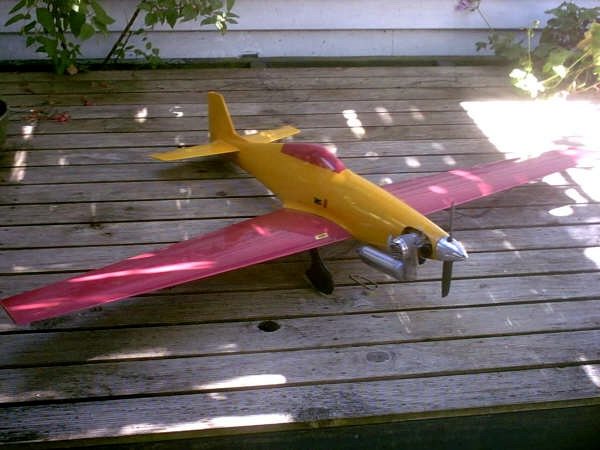

Radio controlled model aircraft racing (pylon racing) is one of the most exciting aspects of model airplane flying. The event comes down to one of the most basic objectives and that is to beat your mates around the course; although it is more of a time trial rather than a race. The course is triangular with 2 back straights of 180 metres each and a base of 40 metres- so each lap is 400 metres- and the race is over 10 laps which is 4 kilometres. At each corner of the triangle are positioned 4 metre high pvc pipes which we call pylons and the aim is to fly outside the pylons – flying once inside the pylons gives you an additional 10% added to your flight time, and flying twice inside the pylons during the race gives you a zero score.
Like most competitive events of model flying there are a number of classes and the sport is constantly developing. New products, engine upgrades, electric motor and battery technology; and new model designs always seem to be appearing.
Simply put the pilots stand inside the triangular shaped course and flies in an anti – clockwise circuit outside the pylons. Assigned to each pilot is a ‘caller’ who releases the model at the start line and then advises the pilot when to turn at each pylon…’how does the caller know that’ you might ask. At the apex of the triangle – we call that number one pylon – there are lights, almost like traffic lights that indicate when each model has gone past the pylon – the light allocated to a particular model comes on and the caller then advises his pilot to then turn. It sounds simple but like most things in life there is a ‘learning curve’.
The ‘fast’ models reach speeds of over 300 kph and the sport models are somewhat slower at speeds of 200kph.
Pylon racing in the Christchurch club in recent times has almost disappeared as a few of the top class competitors have, as a result of the earthquakes, transferred out of town. There are still one or two enthusiasts in the Christchurch club and it is to be hoped that in the near future new members may fill the gaps of those who have transferred away.



